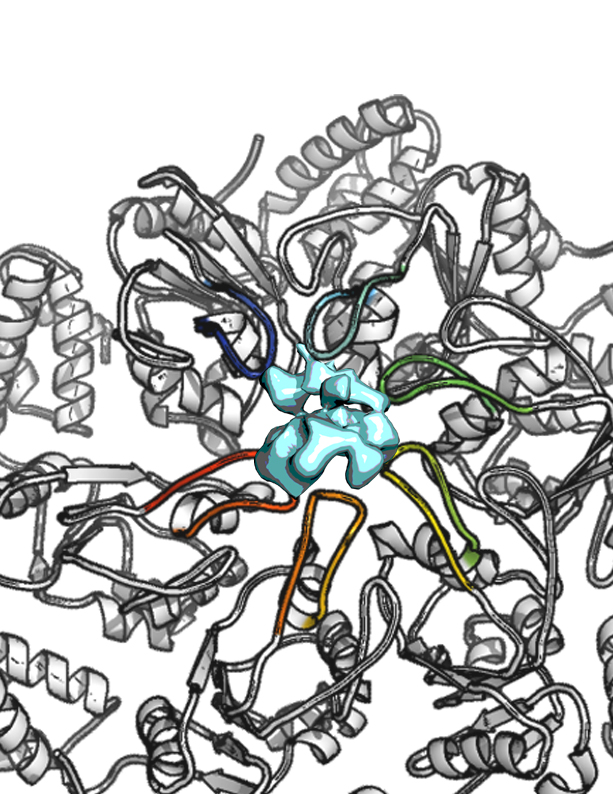
Living creatures use ATP as the “universal energy currency”. ATP-ases are assemblies of molecules that break down ATP into smaller molecules using the energy released to power myriad biological reactions. Molecular motors are ATP-ases that convert this chemical energy into mechanical work on other molecules. The AAA+ ATPases are examples of such molecular machines that perform mechanical work to remodel nearly every type of macromolecule, in cells from all kingdoms of life. A long-standing, largely unanswered question about the functional mechanism of the AAA+ ATPases is how do the rings of chemically identical subunits that make up these assemblies interact with their target macromolecules? The authors address this question by studying Enhancer Binding Proteins (bEBPs) in bacteria, AAA+ ATPases that remodel the σ54-form of RNA polymerase (Eσ54) that is present in complexes with promoter DNA. This remodeling or shape transformation is essential to allow transcription and subsequent expression of genes that allow for nutrient acquisition, complex developmental programs, and virulence as pathogens.
In the current work the authors used isothermal calorimetry (ITC), crystallography and 3D reconstruction from EM single particles along with time-resolved and static small angle X-ray scattering (TR-SAXS and SAXS, respectively) at BioCAT to monitor the development and extent of conformational changes in NtrC1, a bEBP, when it binds to ATP. The results revealed that partial binding of ATP drives a dramatic reorganization of individual molecular subunits (protomers) that differ in their properties, to build highly asymmetric ring-like structures. Heterogeneity in the ring protomers provide an asymmetric distribution of functional states, an asymmetry that imparts a unique identity and therefore a unique function to each of the subunits in the rings that is used to deliver mechanical work in a directional way to their target macromolecules.
Citation: Tatyana A. Sysoeva, Saikat Chowdhury, Liang Guo, B.Tracy Nixon. Nucleotide-induced asymmetry within ATPase activator ring drives 54-RNAp interaction and ATP hydrolysis. Genes and Development, 2013 Nov 15;27(22):2500-11.
The Nixon lab has been a long term collaborator with the BioCAT, being an early adopter of many new technologies including size exclusion chromatography –SAXS and now time-resolved stopped flow SAXS. This has resulted in substantial body of work directed at understanding the structural mechanisms used by the AAA+ ATPases.